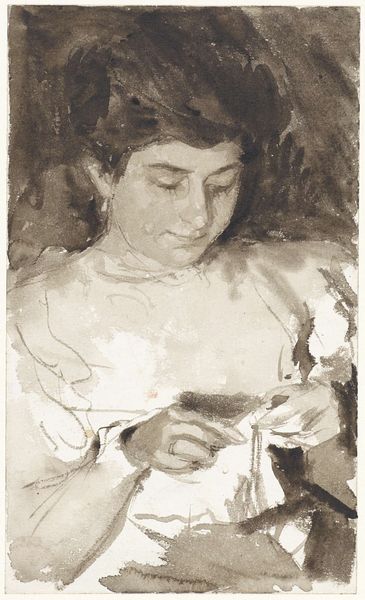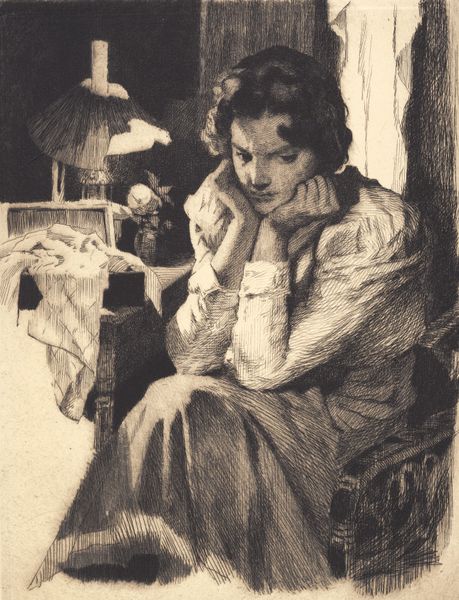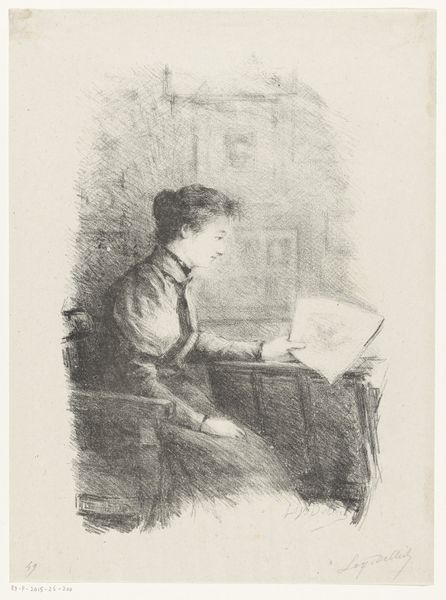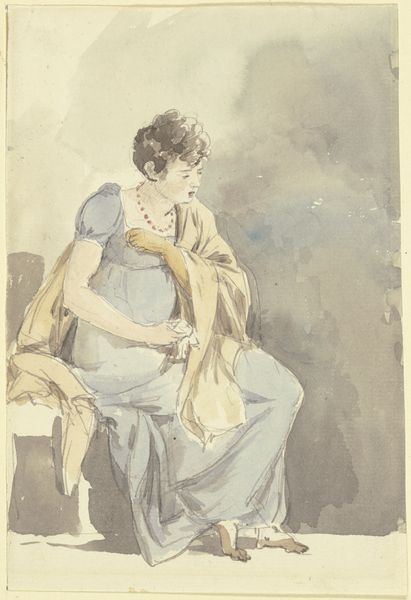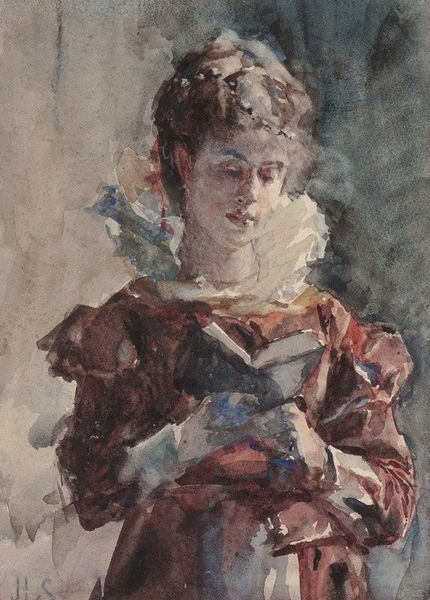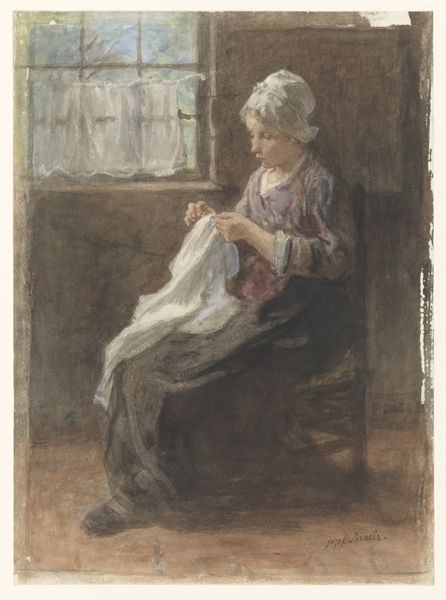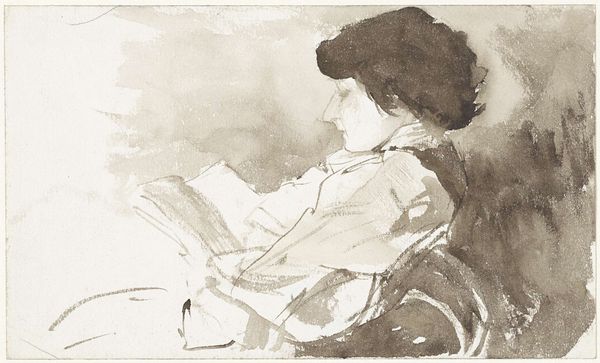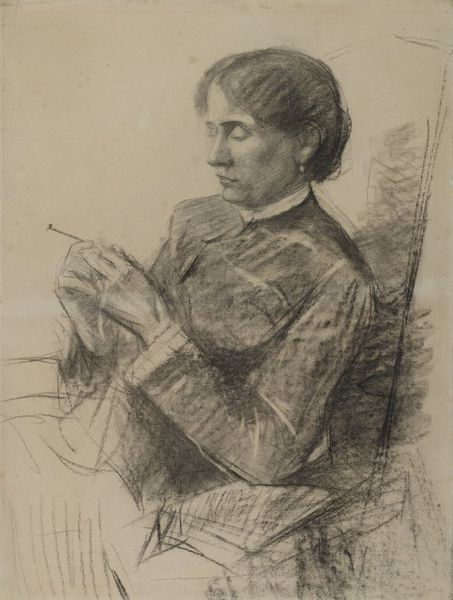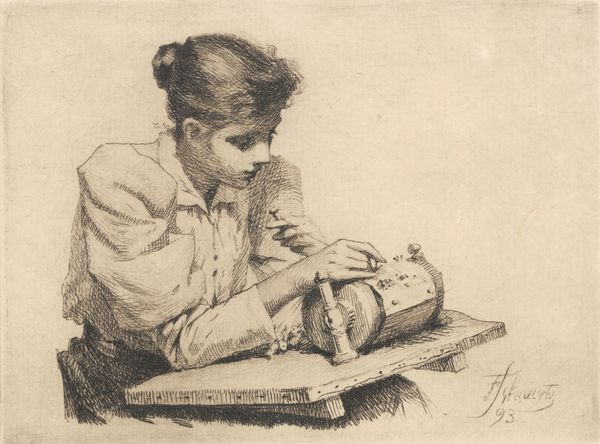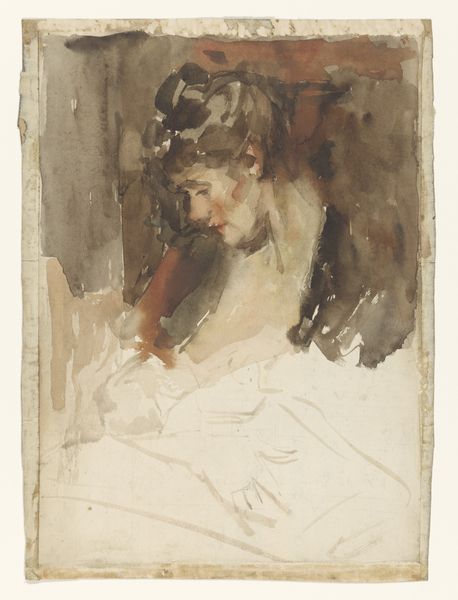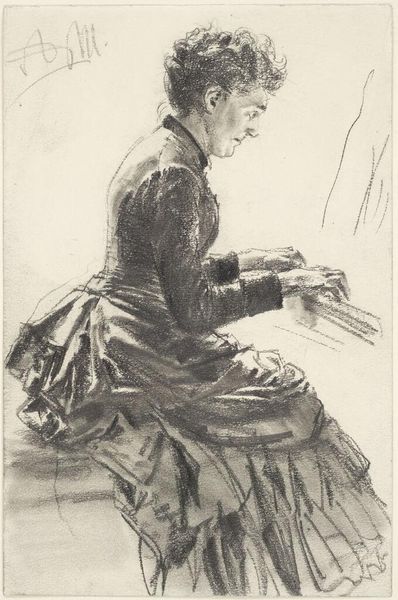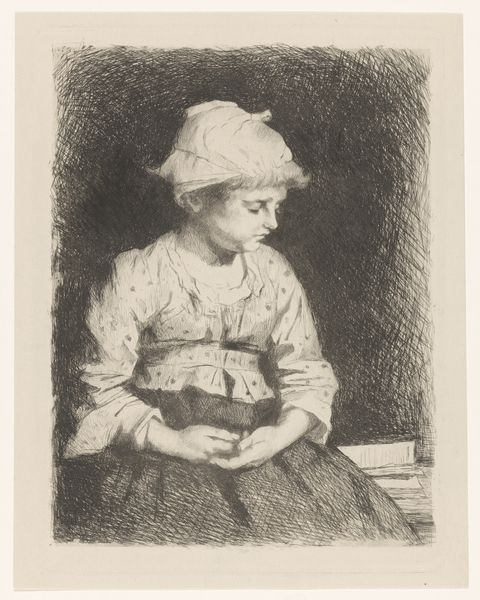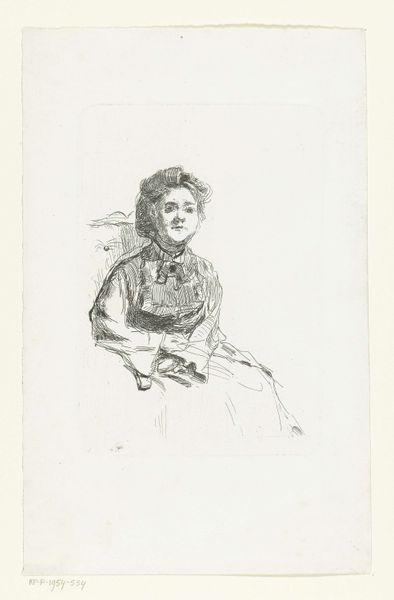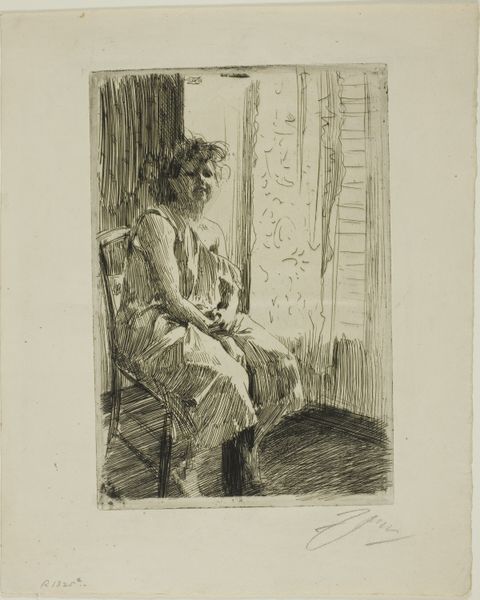
drawing, paper, watercolor, ink
#
portrait
#
drawing
#
impressionism
#
charcoal drawing
#
paper
#
watercolor
#
ink
#
pencil drawing
#
portrait drawing
#
portrait art
Dimensions: height 258 mm, width 180 mm
Copyright: Rijks Museum: Open Domain
Editor: We’re looking at "Hakende vrouw," which translates to "Hooking Woman," a drawing attributed to Bramine Hubrecht, dating from around 1865 to 1913. It’s ink, charcoal, and watercolor on paper. The immediate feeling I get is one of quiet domesticity, almost melancholy. What do you see in this piece from a historical perspective? Curator: I see a fascinating commentary on the role of women and labor during a period of significant social change. The artist portrays a woman engaged in needlework, a task traditionally associated with femininity and domesticity. But is this a celebration or a critique? Editor: That's interesting! I hadn't considered a critique. I suppose the somber tones could suggest that. Curator: Consider the broader context: the rise of industrialization was displacing traditional crafts. Was this artist presenting an idealized vision of a past era, or was it, as you say, melancholic commentary on work devalued by emerging modernity? Were such drawings deemed mere pastimes, not valued artistic expression? Editor: It’s difficult to tell for sure. The sketch-like quality and the somber palette gives it an emotional nuance. Do we know anything about how her work was received at the time? Curator: The reception of art such as this depends heavily on exhibition spaces and critical response. A private showing within a salon of female artists could validate the work on one level; a public gallery that only recognized monumental sculpture or history painting might dismiss it. It becomes a question of access and validation within very particular art networks of the period. The Rijksmuseum validates it today. Editor: That makes so much sense, putting the work within a social structure of validation. It’s made me think a lot more about who gets to decide what is important or not. Thanks! Curator: Indeed! Looking at art from the lens of who gets to create, display, and assess artistic output shows the complex play of cultural values operating through artworks such as these.
Comments
No comments
Be the first to comment and join the conversation on the ultimate creative platform.
